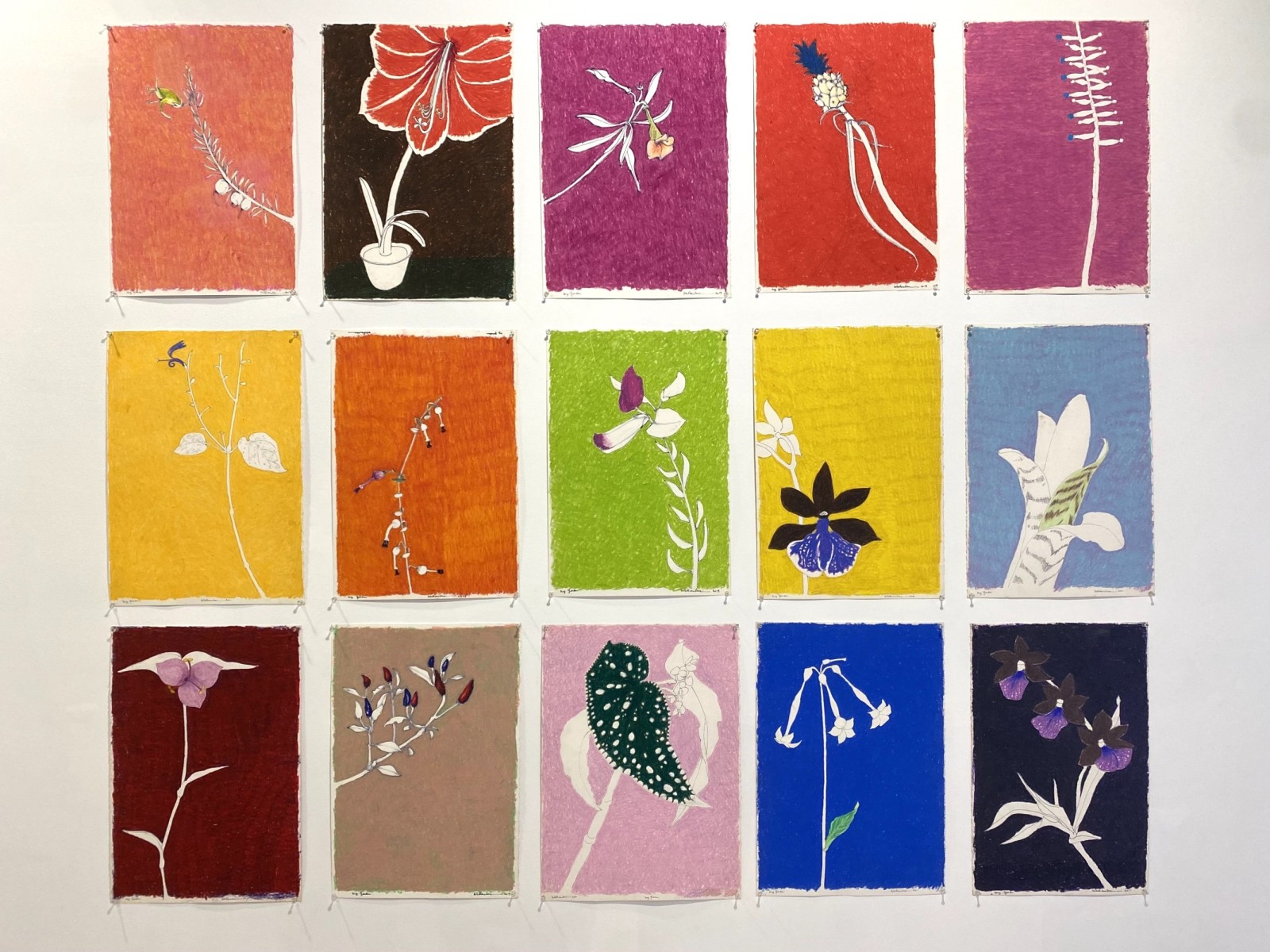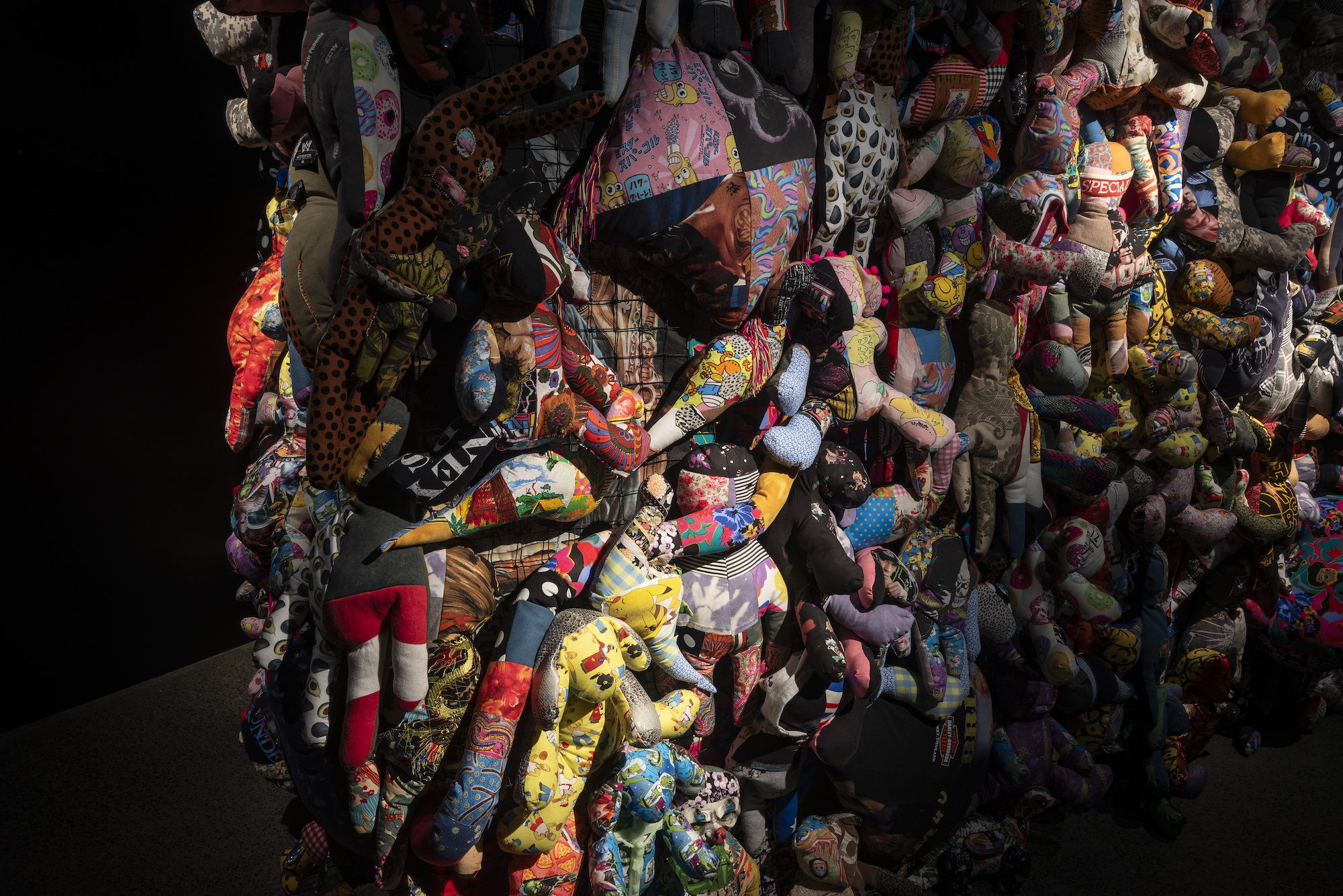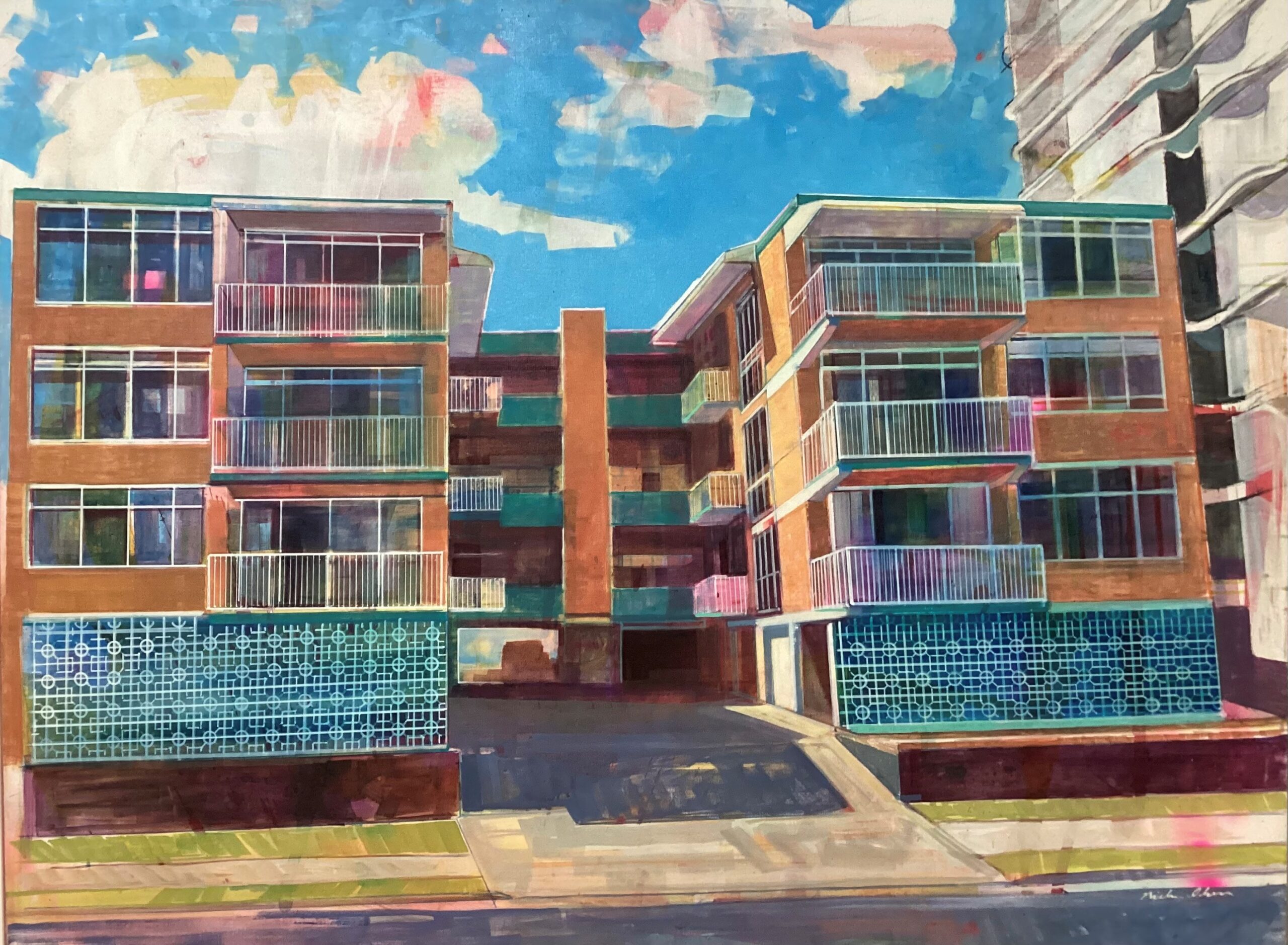For me, exhibition reviews satisfy one of two possibilities: to think through an exhibition more deeply or to see something new. For Lemonade’s opening review, I chose the latter.
It’s at the end of the world, my husband said, as he added The Condensery to the GPS.
More realistically, Somerset Regional Art Gallery sits past Caboolture, Woodford and Kilcoy at an easy drive from Redcliffe, where I’m writing. The road that delivers you weaves through familiar Australian landscape, via tree-lined highways and past minor creeks. On the outskirts of Toogoolawah, by the local fudge shop and council swimming pool, The Condensery is a large, red warehouse.
Mere steps from our car, we are spotted and welcomed inside.
The Apple and the Knife surveys four decades of practice by Canadian-born and Somerset local, Merton Chambers. On first glance, the exhibition showcases the diversity of his work, from precise renderings of Australian foliage in pencil on large swathes of paper to highly-abstracted scenes in vibrant oil pastels. Each aesthetic chapter is hung on a discrete wall: dissected fruits here, graphite explorations there. With time, Chambers’ signature concerns can be traced across his oeuvre. There’s a tight, fastidiousness in his line work that manifests in cross-hatching, and conceptually his work circles around fruit, vitality and abundance.
On the far wall of the opening gallery, Chambers’ series, Energy 1–4(1984), draws my eye. Each sits cleverly between abstraction and figuration, bringing together large fields of pulsing, Autumn-colours and rounded forms indicative of leaves, insects, landscapes and celestial bodies. The works are formally enticing: Chambers uses his oil pastels to build up uniquely textured surfaces and differing degrees of coloured opacity. Each work features a slit, or an opening, reiterating the sexual suggestiveness of Chambers’ practice, where sexuality relates to the fecundity of the field, the pregnant possibility of the land. There’s something Eden-esque in these works: plentiful and without shame. An insightful essay by Louise Martin-Chew, which doubles in the gallery as wall text, illuminates such readings. The drawings also bring to mind the energetic compositions of Hilma af Klint.
In the second gallery, Chambers unleashes new levels of colour and introduces movement to his art. Here we encounter botanical studies of his garden’s flowers against single-coloured backgrounds of vermillion, Yves Klein blue, plum and apple green as well as dancing, sliced vegetables as they grow within the field. The two series recall 1960s kitchen prints and the iterative palette of Andy Warhol. As I look through the gallery window, it strikes me that Chambers has found such colour in Australia’s drought-dry and flooded-brown plains. A final, desolate series of singular trees and rural building remnants acknowledges this other view of loss and loneliness.
Walking back through the gallery, I turn my attention to the building. The Condensery joins a litter of defunct, industrial spaces, from Sydney’s Carriageworks to Cairns’ Tanks Arts Centre, that have been transformed into cultural hubs. In this high-ceilinged space, large dome lights hang between exposed beams and rafters. Crisp, white, modular partitions mark out the gallery’s new hanging walls and at your feet the packing sheds’ original concrete floor remains. There’s something satisfying about this meeting of the old and the new, in turn architecturally subtle and bold.It’s also clear that new(ish) galleries like The Condensery, which opened in 2015, are a leap of faith for a council and a community, requiring extraordinary labour, expertise and funds long before they open.
In her curator’s foreword for the show, Rachel Arndt describes Chambers’ “long overdue” solo exhibition as a “delight” to present in “our very own regional gallery, The Condensery, for all to appreciate and enjoy”. The gallery’s volunteers make this delight palpable. The Apple and the Knife builds on The Condensery’s growing reputation for exceptional contemporary art offerings, from Slow Churn (a survey show of artist’s engaged with climate change and agriculture) to Material Sound (a touring exhibition of sound art). Moreover, as Arndt articulates, the show fulfills the vital role of showcasing a local artist of international calibre: enabling Somerset residents and visitors alike to view the region, and the pressing need for climate action, through Chambers’ engaging eyes. This is a straightforward exhibition, elegantly hung to foreground Chambers’ deft deployment of line, colour, texture and form. And as my husband confirms, it’s well worth the drive.
Louise R Mayhew is an Australian Feminist Art Historian and the Founding Editor of Lemonade.






